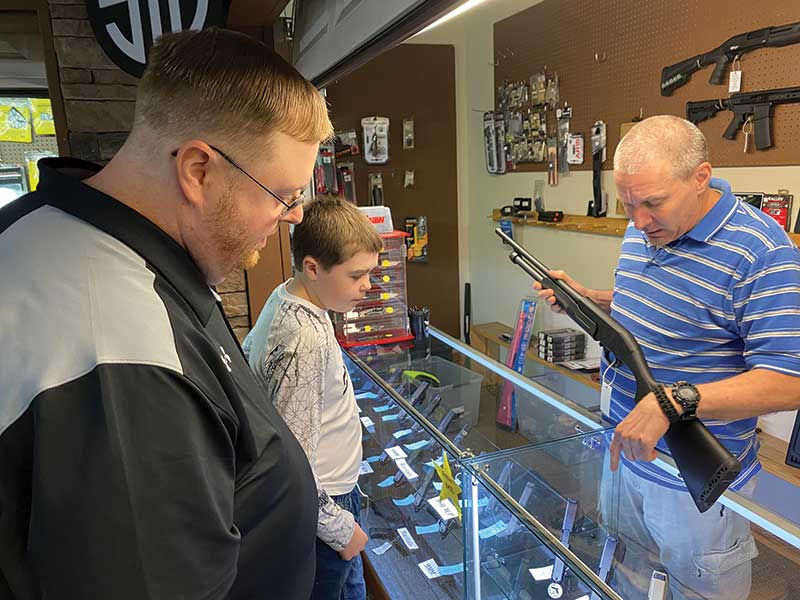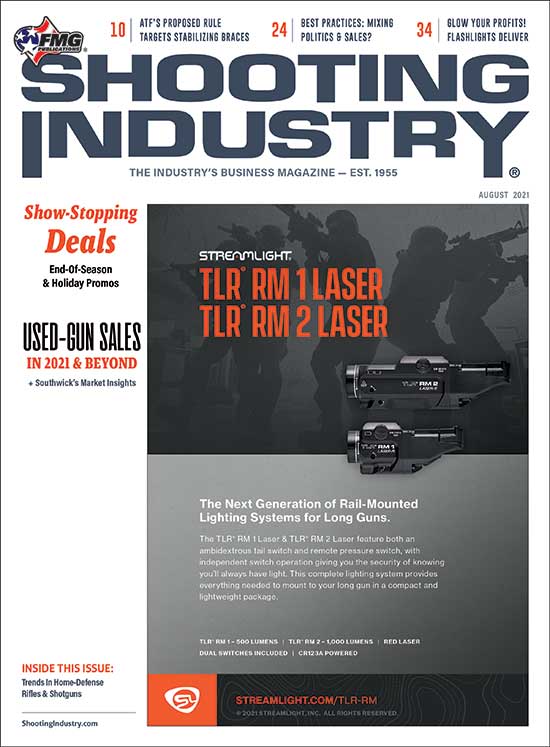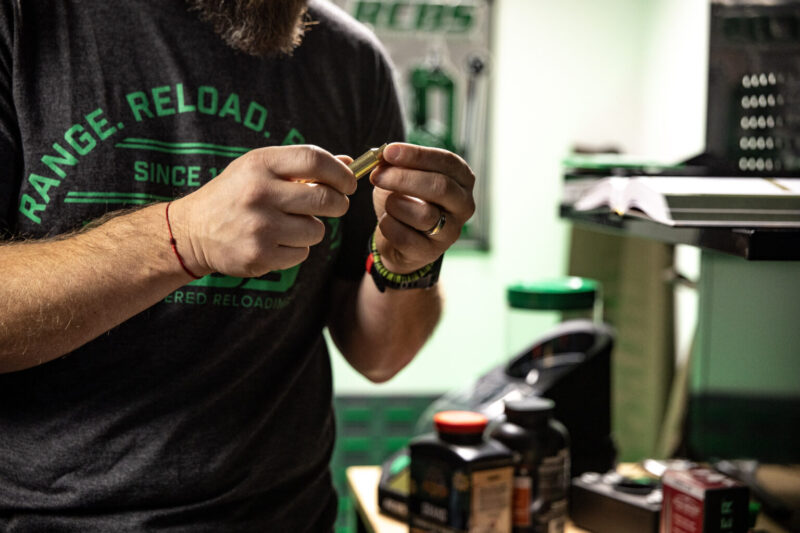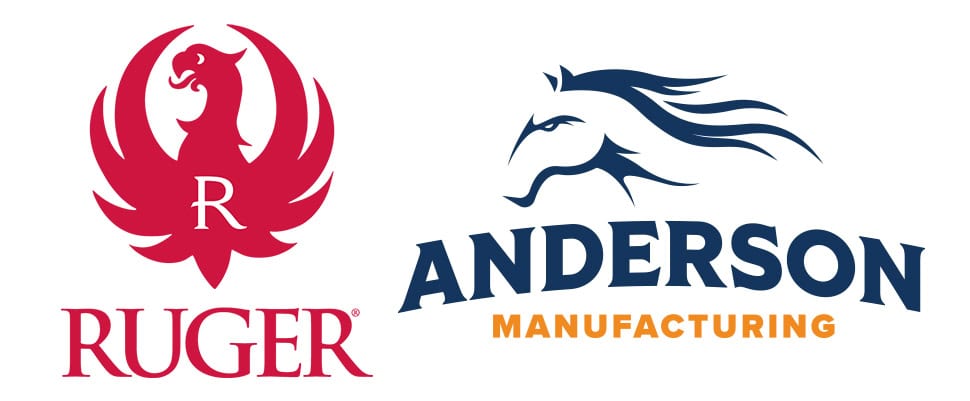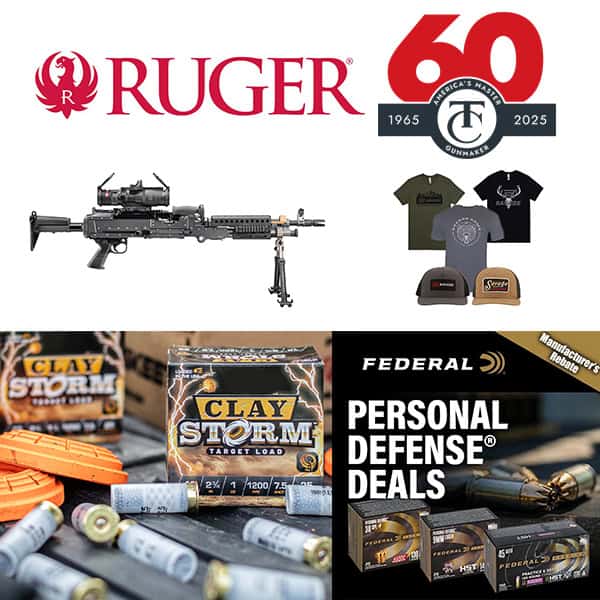“We’re starting to see the ‘seasoned’ gun owners come back because they know they need to get back on the range and sharpen their skills and reacclimate themselves,” he said. “The first-time buyers are still out there, what we’re seeing is they’re now coming in for training, which is good — we certainly need to get more of them in because there are a lot of them out there who purchased a gun in the past year.”
Phillips noted the proportion of first-time buyers to regular customers has changed significantly in recent weeks, as well.
“It’s gone from 80 or 90% purchases being done by first-time gun owners to closer to 50-50 now,” he added. “There’s still a lot of diversity in who’s coming in to buy, as well as in our classes — which is what we want to see.”
Home-Defense Long Guns:
Trends Impacting Market
Like most segments of the industry, the home-defense long-gun market received a significant boost thanks to the events of the past year-plus. While there are signs of the market cooling off during the typical summer lull, dealers and manufacturers report sales remain elevated.
Customers Embrace New Options
Jeff Creamer, president and CEO of SB Tactical, shared insights on one way the home-defense market has changed over the past 10 years.
“If you go back to 2010, you had three categories of defensive options: Handguns, full-size long guns (shotguns or rifle) and SBR/SBSs, a very niche segment of the industry because of NFA and complexities involved,” he said.
The advent of pistol-stabilizing braces in 2013 — when SIG SAUER and Century Arms introduced SKUs with SB Tactical’s SB15 and SB47, respectively — gave customers a new option.
“People began to realize the large-frame pistol concept became a viable alternative, because it gave them more control than they would have with a traditional handgun and more maneuverability than a traditional long gun in a vehicle or home,” he stated. “They filled a need in the market.”
The rise of pistol-caliber formats, led by 9mm, further bolstered the category.
“That category exploded, which is why you saw the rapid expansion of firearms manufacturers embrace the platform — because their customers were telling them that’s what they needed,” he said. “When you see conservative, large firearms manufacturers begin to adopt brace options, like Ruger and Smith & Wesson, you know customers are telling them what they want.”
Currently, pistol-stabilizing braces are at the center of ATF’s June 7 Notice of Proposed Rule Making (see this month’s lead Industry News story on p. 10 for more), which will certainly impact the burgeoning category. Creamer argued braces enhance safety.
“Our intent was never to circumvent the NFA, it was to take a pistol — as classified — add a third point of contact and make it safer and more controllable. Period. Manufacturers, dealers and customers clearly understood that,” he said.
First-Time Gun Owners Remain A Driving Force
A year ago, sales were driven by an estimated 8.5 million first-time gun buyers. Today, they’re still a prominent force — and continue to be motivated to buy because of self-defense concerns.
“We’re still seeing a lot of first-time buyers/guests. Many of them are interested in training programs, CCW courses, as well as general shooting,” noted Alex Hague, co-owner of VRA, with a location in Vandalia, Ohio and New Castle, Ind. “This has been a very busy summer for us. I think most people are buying for self-defense (i.e., handguns and shotguns).”
While Hague didn’t see one particular SKU outpacing the others, the home-defense category — as a whole — was up.
“I’m not seeing a particular long gun selling at a different rate than the others, but I would still say handgun sales are stronger,” he observed. “We’ve certainly seen an uptick in long-gun sales. It hasn’t been a mad rush to purchase a long gun, but sales are certainly high for this time of year.”
John Phillips, founder and president of Poway Weapons & Gear Range (PWG) in Poway, Calif., shared a recent trend: the return of “seasoned” gun owners to his facility.
”We’ve certainly seen an uptick in long-gun sales. It hasn’t been a mad rush to purchase a long gun, but sales are certainly high for this time of year.”
Alex Hague, Co-Owner Vandalia Range & Armory
Dealers Play A Crucial Role
James Ross, Daniel Defense director of commercial shares provided his assessment on the current state of the home-defense long-gun segment.
“The market is still up significantly over a ‘normal’ year, but it’s not what it was during the first quarter,” he said.
Positioned at a higher price point, Daniel Defense’s products have attracted significant interest from first-time buyers. At the height of demand last year, Ross took a portion of inbound calls from these customers — encouraging them to seek out local resources for training to maximize their investment.
“A lot of folks shared they were nervous about being a firearms owner, and we would direct them to get training so they could be comfortable out on the range — ultimately, they’re responsible for the business end of their firearm,” he said.
Ross highlighted the role of the brick-and-mortar dealer in turning these first-time gun owners into repeat buyers and, ideally, long-term enthusiasts.
“Dealers will play a big role in developing these first-time buyers, and it’s going to come down to customer service, making people feel welcome in their store and training their associates to handle questions from customers of all interest levels — that’s how they’ll transition them into second-, third- and fourth-time gun buyers,” he said.
One of the ways Daniel Defense has adapted to this unprecedented demand surge is selling 90 days at a time, according to Ross.
“We do this for the dealers, so we can tell them the date they’ll get their shipment from us,” he said. “We know it’s difficult, as a business owner, to plan for the future not knowing when products will be in. We’ve heard of widespread order cancellations impacting other manufacturers and we don’t want to be in that situation — so selling 90 days at a time gives us enough time to ramp our build plan up or down.”
Signs Of A Slowdown?
Phillips shared sales of home-defense long guns have tapered off in recent months — with handguns being the preferred option for customers.
“Shotgun sales have definitely slowed down, we’re still seeing ARs a little bit, but handguns are overwhelmingly being sold right now,” he observed.
Phillips highlighted the absence of Remington firearms in the marketplace as a potential cause of the drop in shotgun sales.
“There has been a vast chasm in the shotgun market without the 870. They’re in production, but we’re hearing it could be several months before we start seeing product,” he said. “A lot of customers have sat back and are waiting: The Remington 870 is a gun everyone knows, loves, wants. There are a lot of great options out there, but it’s hard to get a customer to buy something else once they have their heart set on it.” (Editor’s Note: Roundhill Group Inc. — new owners of the RemArms brand following Remington Outdoor Co.’s 2020 bankruptcy — recalled 230 former employees back to the historic Ilion, N.Y., factory in May to resume production of the Model 870.)
For those customers who want options similar to the 870, Phillips maintains a robust selection of pump shotguns.
“Economically priced pumps are readily available, and we have a lot of those options for customers on the wall,” he said. “We took in some imported guns, and they sold well — but we were careful on how deep we went in on them.”
Challenges In The Market
Demand continues to be elevated in most parts of the country, but not quite to the levels observed last summer — which has enabled inventory levels to recover.
“Firearms are slowly starting to trickle their way back in, which is good to see,” Phillips said.
On the flipside, however, Phillips is faced with the problem that’s impacting likely thousands of gun stores across the country: limited ammunition inventory to support firearm sales.
“It’s always hard to sell a gun when you don’t have ammo to go along with it — especially the home-defense segment,” he said. “A lot of people have figured they’ll just wait it out and come in later when there’s more availability, so it makes it challenging.”
PWG had considerable sales volume prior to the events of the past year-and-a-half and they’re still having difficulty obtaining ammunition.
“When people say it’s all based on relationships and the ‘big boys’ get dealt with first — I would say, as one of the ‘bigger boys’ we’re not necessarily seeing that,” he said. “I have ammunition orders from March 2020 that still haven’t been filled. I know for a fact other dealers are getting massive orders that were placed after.”
The fulfillment process has to get better, Phillips added.
“We’re in the 2020s, and manufacturers aren’t able to tell us when we would be able to get product or where we are in line. We have a long way to go, as an industry, to give dealers better insight on when their product will show up, so they can date their inventory and have a better plan,” he concluded.
Dealers, what trends are you observing in your store? Are inventory levels beginning to be replenished? We want to hear from you! comments@shootingindustry.com

